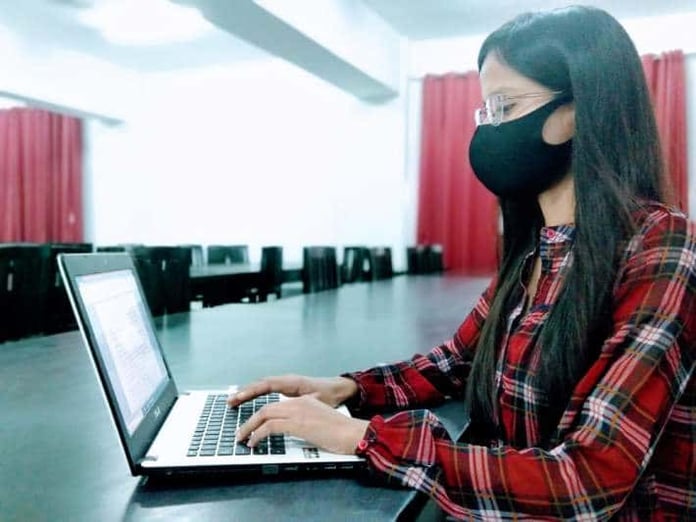The ongoing worldwide Coronavirus pandemic is evolving a new lifestyle as we are probably aware of it. It is one of the most critical occasions of the decade as the progressing flare-up has temporarily stopped academic lives. As much as we need to return to our ordinary exercises, it appears that a huge number of us are quarantined at home and hostels. However, this is not the right time to abandon your academics and enterprising dream. Accept the open doors of e-education to reach new heights. Schools and colleges have opened their e- programs and have initiated working to meet students’ needs and high academic standards. If online/virtual programs remain successful, you have to keep upgrading course materials, teaching and learning methods, curriculum and keep with students’ and administrative expectations.
Let’s say that your college/department has designed an e- program, and has been successfully operating it. The question arises is, how the course/material/syllabus will remain competitive and fruitful in the current academic scenario; how your e-lessons will surpass your fellow competitors. Teachers can maintain a high-quality academic standard by keeping teaching style, approach and methods up to date. Administration can play a vital role by monitoring e- requirements, checking on the operations of other institutions and e- vendor programs.
The Role of a Teacher
Teachers are the frontline of e-lessons. They work daily with the course design and content. They read issues from learners having problems in Signing In, downloading course content, etc.
By keeping yourself up to date, you are likely to keep your e- teaching skills updated.
Learning from websites
Broaden your perspective by searching the most trending URL and mobile applications for online classes. Find demonstration sites with various courseware including downloadable text and graphic files.
When you check out a content site, mark the following essential points.
- About Hardware
- Learners can easily download and log in the ‘prescribed application’ (Zoom/Skype/Gyanmantra, etc).
- Learners can use apps in different types of operating systems (android, windows, Apple Mac, etc.).
- Both teachers and learners use a direct and dedicated line which is fast and approachable.
- Internet connection should be stable and have 4 G (preferable) speed, however, 3 G speed can also work.
- It is always good to have acoustic walls across your rooms. In case the walls are not soundproof, close your fan and open Air Conditioner.
- In case of low memory in your mobile phone or laptop, install a memory card and a hard disc.
- Arrange earphones/headphones/speakers before you start the class.
- About Software
- Mention a specific browser where a certain website or application can be easily logged in (like yahoo, google chrome, firefox, etc.).
- Preferably, your online application should be accessible from any browser.
- Before recommending any specific software to your learners, review its price, affordability, and compatibility in different operating systems.
- Recommend free of cost and essential software that are downloadable and are available online (Grammarly, plagiarism check, etc.)
- Install antivirus in your computer systems. Some of the antivirus pieces of software are available online and are free of cost. You may also purchase it at affordable prices consisting of varying features.
- Be aware of scams and fake software that upload your files and save the content for their use. Always prefer to take consultation and recommendations from tech-savvy people.
- About Network
- Try to use school/institutional networks. These networks are safe and easy to use.
- Institutional networks contain privacy statements and security guidelines.
- Check your internet broadband speed by just clicking on the following link.
- https://www.speedtest.net/ and tab ‘GO’.
- About Educational Tools
- Look for both interactive and passive tools that are available online.
- Look for thee- demonstrations of the educational tools that are available online.
- Materials
- Make use of multimedia materials frequently.
- Check out the compatibility of streaming information (audio, video) containing in MP3/Mp4 and HD video in 1080/780 pixels.
- Avoid recommending heavy pdf files. Compress/reduce the file size when documents exceed the size limit.
- In the case of scanning documents, the average size should not exceed 332,418 bytes per file.
- Choose JPEG or TIFF for sharing images.
- Make sure that the sources of the course content are documented and acknowledged accurately.
- Many of the websites provide an opportunity to maintain a store of your documents. You may work on it as well!
- Projects/Assignments
- Mention point values, a deadline for submission, essential dates, and descriptions.
- Indicate the file type in which students are required to send their documents/videos
- Indicate the mode (email, blog post, etc.) of transferring files.
- Mention the instructions of using plagiarism software (include the name of software)
- Keep mentioning academic honesty, self- reliance, and expectations on site.
- Amount of Interaction
- Provide feedback on assignments, projects, and other reflective tasks.
- Update community networks by frequently announcing notices and a summary of the last class that you took a few minutes ago.
- Provide links to an external web quiz site for extensive practice.
- Include opportunities for active learning.
- Include feedback sessions. You may devote the last few minutes of your class as a feedback time.
- Mention that only a certain number of emails, comments, chat sessions, posts will be accepted/replied on a daily/weekly basis.
- Prioritize only important emails, comments, posts and reply.
- Mention reasonable and consistent timings for e-calling/conference networking.
Being a part of active e-community is important to try out new techniques, ideas and resolving issues. E-learning in the time of COVID-19 has become crucial to maintaining a high-quality academic standard. When you visit other websites, look at the above points, you will ascertain either from the site or your fellow mates. You may adopt or adapt the similar note points as a checklist for creating your material and site.


